About This Webinar
Researchers from around the world presented their latest work at “Biophotonic Imaging for Medicine: A Digital Conference.”
Presentations focused on a range of light-based imaging and microscopy techniques for diagnosing and assessing illness, and for studying other attributes and functions of biological tissue in a medical context. Topics included wavefront engineering for in vivo deep tissue imaging, deep UV excitation microscopy for slide-free pathology, quantitative phase digital holographic microscopy, photoacoustic analysis, multimode fiber endoscopy, surface-enhanced Raman scattering (SERS), microscopy and lens-free microscopy.
1:00 p.m.
FEATURED PRESENTATION
Deep UV surface excitation microscopy for imaging unsectioned tissue: Realizing slide-free pathology
 A new, simple and inexpensive form of optical microscopy generates diagnostic-quality histological images with enhanced content from fresh or fixed but unsectioned tissue rapidly, with high resolution. MUSE (microscopy with UV surface excitation) is nondestructive and eliminates requirements for conventional histology processing, formalin fixation, paraffin embedding or thin sectioning. It requires no lasers, confocal, multiphoton or optical coherence tomography optics, and can eventually cost a few thousands of dollars or even less. MUSE samples are stained within seconds using familiar histology stains, such as eosin and DAPI, and the resulting high-resolution images are familiar (but with novel features) and easy to interpret. This sample-sparing method has potential to provide novel appreciation of cancer biology, to ensure availability of tissue from small biopsies for downstream analyses (enabling additional studies without additional biopsies), and to enable histology and pathology in low-resource environments. MUSE relies on two mechanisms: 1) surface-restricted excitation of fluorescent dyes due to microscale penetration of sub-300-nm UV light; and 2) emission of visible light by many conventional dyes excited in this way. These signals are bright enough to be detected by conventional color cameras with sub-second exposures, allowing rapid imaging of large areas. Images can be converted in real time from fluorescence to H&E-like brightfield appearance for interpretation. Surface-only, slide-free microscopy performed directly on the cut surfaces of millimeter- to centimeter-thick tissue specimens generates not just images that replicate conventional slide results, but also reveal significant topological and even tissue-mechanical properties.
A new, simple and inexpensive form of optical microscopy generates diagnostic-quality histological images with enhanced content from fresh or fixed but unsectioned tissue rapidly, with high resolution. MUSE (microscopy with UV surface excitation) is nondestructive and eliminates requirements for conventional histology processing, formalin fixation, paraffin embedding or thin sectioning. It requires no lasers, confocal, multiphoton or optical coherence tomography optics, and can eventually cost a few thousands of dollars or even less. MUSE samples are stained within seconds using familiar histology stains, such as eosin and DAPI, and the resulting high-resolution images are familiar (but with novel features) and easy to interpret. This sample-sparing method has potential to provide novel appreciation of cancer biology, to ensure availability of tissue from small biopsies for downstream analyses (enabling additional studies without additional biopsies), and to enable histology and pathology in low-resource environments. MUSE relies on two mechanisms: 1) surface-restricted excitation of fluorescent dyes due to microscale penetration of sub-300-nm UV light; and 2) emission of visible light by many conventional dyes excited in this way. These signals are bright enough to be detected by conventional color cameras with sub-second exposures, allowing rapid imaging of large areas. Images can be converted in real time from fluorescence to H&E-like brightfield appearance for interpretation. Surface-only, slide-free microscopy performed directly on the cut surfaces of millimeter- to centimeter-thick tissue specimens generates not just images that replicate conventional slide results, but also reveal significant topological and even tissue-mechanical properties.
Richard Levenson is professor and vice chairman for strategic technologies in the department of pathology and laboratory medicine at the University of California, Davis. He previously served as vice president for research at Cambridge Research and Instrumentation Inc. (now part of PerkinElmer Inc.) and consulted in areas where optics, software and medicine intersect.
1:33 p.m.
Applications of multiphoton microscopy in urology
 Routine urological surgery frequently requires rapid, on-site tissue evaluation for appropriate patient management. However, this necessitates tissue resection either during a biopsy procedure to determine whether the lesion is benign or malignant, or during an intra-operative procedure to assess the margin status via frozen section analysis (FSA). Both histopathological evaluation and FSA require time-consuming tissue processing (fixing, sectioning and staining), which creates tissue artifacts that may hinder evaluation. Therefore, there is a need for an imaging tool that can rapidly assess tissue in real time, at the cellular level, without further processing. Multiphoton microscopy (MPM) is one such technique that can generate histology-quality images from fresh tissue. MPM has the potential to empower surgeons with real-time feedback to improve patient management by reducing the number of unnecessary benign biopsies and rate of repeat biopsies, as well as facilitating margin assessment intra-operatively.
Routine urological surgery frequently requires rapid, on-site tissue evaluation for appropriate patient management. However, this necessitates tissue resection either during a biopsy procedure to determine whether the lesion is benign or malignant, or during an intra-operative procedure to assess the margin status via frozen section analysis (FSA). Both histopathological evaluation and FSA require time-consuming tissue processing (fixing, sectioning and staining), which creates tissue artifacts that may hinder evaluation. Therefore, there is a need for an imaging tool that can rapidly assess tissue in real time, at the cellular level, without further processing. Multiphoton microscopy (MPM) is one such technique that can generate histology-quality images from fresh tissue. MPM has the potential to empower surgeons with real-time feedback to improve patient management by reducing the number of unnecessary benign biopsies and rate of repeat biopsies, as well as facilitating margin assessment intra-operatively.
Manu Jain is an assistant attendee optical imaging specialist in the department of dermatology at Memorial Sloan Kettering Cancer Center in New York. She is an expert in optical imaging, with a focus on multiphoton microscopy and full-field optical coherence tomography. Her aim is to validate optical imaging as a rapid diagnostic tool for clinicians to aid patient management.
1:51 p.m.
Severity of inflammation in inflammatory bowel diseases assessed by quantitative phase digital holographic microscopy
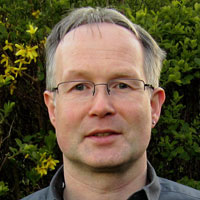 Inflammatory bowel diseases, including Crohn’s disease and ulcerative colitis, present large burdens for patients. The current therapeutic armamentarium is often limited due to severe side-effects and loss of efficacy over the course of disease. There is an urgent need to quantify the therapeutic response of new drugs in preclinical studies. Label-free quantitative phase imaging with digital holographic microscopy (DHM) provides access to spatial-resolved density of dissected tissues by optical path length delay and refractive index (RI). The capabilities of DHM to quantify the severity of inflammation by density changes in dissected colonic tissues is explored. The course of dextran sodium sulfate-induced colitis in C57Bl/6 mice was analyzed by spatial resolved RI determination of unstained colonic sections. The RI of inflamed colonic segments in different layers decreased significantly compared to healthy tissue and correlated with the severity of inflammation. Moreover, human cryostat sections of endoscopic biopsies from patients with active Crohn's disease were examined by DHM and compared to data from Crohn's in remission. In agreement with the prior animal study for the active inflammation, the average RI was significantly reduced in all parts of the colonic wall compared to samples from Crohn’s disease patients in remission. In conclusion, DHM reliably assesses label-free density changes of the colonic wall in inflammatory bowel disease patients ex vivo by absolute parameters that quantify inflammatory damage. This paves the way for novel methods to quantify therapeutic response in inflammatory bowel disease and to automate histological examinations in terms of digital pathology.
Inflammatory bowel diseases, including Crohn’s disease and ulcerative colitis, present large burdens for patients. The current therapeutic armamentarium is often limited due to severe side-effects and loss of efficacy over the course of disease. There is an urgent need to quantify the therapeutic response of new drugs in preclinical studies. Label-free quantitative phase imaging with digital holographic microscopy (DHM) provides access to spatial-resolved density of dissected tissues by optical path length delay and refractive index (RI). The capabilities of DHM to quantify the severity of inflammation by density changes in dissected colonic tissues is explored. The course of dextran sodium sulfate-induced colitis in C57Bl/6 mice was analyzed by spatial resolved RI determination of unstained colonic sections. The RI of inflamed colonic segments in different layers decreased significantly compared to healthy tissue and correlated with the severity of inflammation. Moreover, human cryostat sections of endoscopic biopsies from patients with active Crohn's disease were examined by DHM and compared to data from Crohn's in remission. In agreement with the prior animal study for the active inflammation, the average RI was significantly reduced in all parts of the colonic wall compared to samples from Crohn’s disease patients in remission. In conclusion, DHM reliably assesses label-free density changes of the colonic wall in inflammatory bowel disease patients ex vivo by absolute parameters that quantify inflammatory damage. This paves the way for novel methods to quantify therapeutic response in inflammatory bowel disease and to automate histological examinations in terms of digital pathology.
Björn Kemper is a senior researcher at the Biomedical Technology Center of the University of Muenster, Germany. His research interests are optical metrology and biomedical optics.
2:09 p.m.
Advancing optical time stretch for high-throughput imaging
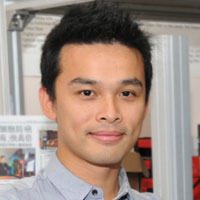
Initially developed for fiber optic communication, optical time stretch has recently been adopted for ultrafast and sensitive optical imaging, at an unprecedented imaging speed of millions frames or scans per second. Since 2009, it has opened new opportunities to accelerate development of biomedical diagnostics, where there is a strong need to scale both throughput and accuracy. We have recently advanced the technology for achieving high-performance optical time-stretch imaging on both the single-cell and tissue scales.
Quantitative optofluidic microscopy enables high-content, single-cell phenotyping (based on absorption, scattering, and other physical properties including size, morphology and dry mass) at an ultrahigh imaging throughput of approximately 100,000 cells per second. Meanwhile, all-optical multi-megahertz (>10 MHz)
swept-source optical coherence tomography (OCT)enables high-speed and practical in vivo anatomical and functional 3-D tissue imaging. Generating enormous amounts of data in real time, this technology uniquely creates new insights of data-driven science in clinical diagnostics and basic research.
Kevin Tsia is an assistant professor in the electrical and electronic engineering department and the medical engineering program at the University of Hong Kong. He earned his PhD in electrical engineering at University of California, Los Angeles, in 2009.
2:27 p.m.
Raman microscope system for the detection of B-cell malignancies using surface-enhanced Raman scattering

B-cell malignancies are clinically difficult to diagnose and treat due to the inherent variability in disease expression. B-cell malignancies arise in the process of cell maturation and differentiation. As a result, cell subtypes vary widely, each with unique pathological characteristics. Each subtype must be identified and treated individually for an optimal clinical outcome. As B-cells mature, they will express unique surface antigens. Cancer subtypes can be determined by identifying 10 to 20 different surface antigens. The simultaneous detection of so many different cell surface proteins requires a new method for protein multiplexing.
Surface-enhanced Raman scattering (SERS) is an optical technique that provides significantly greater protein multiplexing capabilities than standard optical methods. This technique uses gold nanoparticles to target cell surface proteins and provide increased sample light scattering. A Raman microscope system has been constructed to visualize the light-scattering spectrum. Using this microscope system, gold nanoparticle probes have been developed that are stable in a variety of harsh environmental conditions. These probes have been conjugated to antibodies for direct targeting of cell surface antigens and have been used to develop a SERS-based immunoassay. Using this technique, the simultaneous detection of many cell surface proteins is possible. The development of this SERS-based technique for protein multiplexing has the potential to improve targeted detection and treatment of B-cell malignancies.
Nathan Israelsen is a graduate student in the lab of professor Elizabeth Vargis at Utah State University. He was previously employed at Quansys Biosciences Inc., where he was involved in the production and testing of multiplex ELISA assays for biomarker quantification.
2:45 p.m.
KEYNOTE
Democratization of next-generation imaging, sensing and diagnostics tools through computational photonics
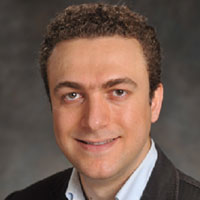 The use of mobile phones and other consumer electronics devices, as well as their embedded components, create opportunities for the development of next-generation imaging, sensing, diagnostics and measurement tools through computational photonics techniques. The massive volume of mobile phone users, which has reached approximately 7 billion, drives the rapid improvements of hardware, software and high-end imaging and sensing technologies embedded in our phones, transforming the mobile phone into a cost-effective yet extremely powerful platform to run, for example, biomedical tests and perform scientific measurements that would normally require advanced laboratory instruments. This might help us transform current practices of medicine, engineering and sciences through democratization of measurement science and empowerment of citizen scientists, educators and researchers in resource-limited settings and developing countries.
The use of mobile phones and other consumer electronics devices, as well as their embedded components, create opportunities for the development of next-generation imaging, sensing, diagnostics and measurement tools through computational photonics techniques. The massive volume of mobile phone users, which has reached approximately 7 billion, drives the rapid improvements of hardware, software and high-end imaging and sensing technologies embedded in our phones, transforming the mobile phone into a cost-effective yet extremely powerful platform to run, for example, biomedical tests and perform scientific measurements that would normally require advanced laboratory instruments. This might help us transform current practices of medicine, engineering and sciences through democratization of measurement science and empowerment of citizen scientists, educators and researchers in resource-limited settings and developing countries.
Aydogan Ozcan is the chancellor's professor at the University of California, Los Angeles (UCLA), leading the Bio- and Nano-Photonics Laboratory at UCLA School of Engineering. He is also the associate director of the California NanoSystems Institute (CNSI) and a professor with the Howard Hughes Medical Institute. Ozcan holds 29 licensed patents and more than 20 pending patent applications. He is also the author of one book and co-author of more than 400 peer-reviewed articles in major scientific journals and conferences. He is a fellow of SPIE and OSA, and has received major awards including the Presidential Early Career Award for Scientists and Engineers; SPIE Biophotonics Technology Innovator Award; SPIE Early Career Achievement Award; the Army, Navy and IEEE Photonics Society Young Investigator awards; National Science Foundation CAREER Award; National Institutes of Health Director’s New Innovator Award; National Geographic Emerging Explorer Award; National Academy of Engineering Grainger Foundation Frontiers of Engineering Award; and MIT’s TR35 Award for his seminal contributions to computational imaging, sensing and diagnostics.
Watch an interview with Aydogan Ozcan here.
3:18 p.m.
A novel photoacoustic camera for medical imaging
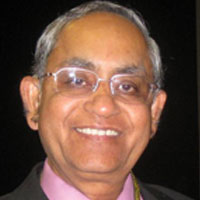 Photoacoustic imaging (PAI)
Photoacoustic imaging (PAI) is an emerging, noninvasive, functional and molecular imaging modality that has not yet entered the clinic. It employs short laser pulses in the near-infrared to cause thermal expansion of dominant absorbers in the tissue, producing ultrasonic waves. These waves are then used to produce an image that maps the location and concentration of chromophores such as deoxy- and oxy-hemoglobin, water, and lipid in the tissue. PAI is expected to significantly impact disease management for prostate, breast, thyroid and skin cancer. With transrectal ultrasound (TRUS) for prostate imaging, radiologists often cannot visualize cancer regions. This results in uncertainty, difficult zone-based and repeat biopsies with added cost to the medical system, as well as anxiety to patients. A prototype PAI camera strategically places an acoustic lens between the tissue and the ultrasound sensor array, rendering simultaneous and real-time focusing of all absorbers that lie in a specific plane – called the C-scan plane – in the tissue. Ex vivo C-scan multispectral photoacoustic images of more than 100 prostate and thyroid cancer biopsied glands have been taken to date. Statistical analysis and neural network results show the system has 81.3 percent sensitivity and 96.2 percent specificity for differentiating cancer from normal tissue. In comparison, for TRUS, the numbers are typically less than 60 percent. The technology, device application opportunities and commercialization challenges will be discussed.
Navalgund Rao is a professor at the Rochester Institute of Technology with an adjunct appointment at the University of Rochester Medical Center. For the past 30 years, he has been involved in teaching and research in medical imaging, digital image and signal processing with emphasis on ultrasound and photoacoustic imaging.
3:36 p.m.
Photoacoustic imaging of breast cancer

In
photoacoustic imaging, pulsed light is used as incident probing energy, while acoustic energy is detected as the signal. The acoustic waves are produced by thermoelastic expansion at locations where the light has been absorbed and are detected using multiple ultrasound transducers. With a knowledge of the acoustic velocity, locations of the acoustic sources can be estimated and, thereby, the location and measure of optical absorption. The method can image vasculature deep in tissue using the high optical absorption of hemoglobin with the high resolution of ultrasound detection. Since angiogenesis, which causes increased vascularity, is one of the hallmarks of cancer, photoacoustics holds promise in imaging breast cancer as shown in proof-of-principle studies.
We will look at latest patient results obtained using the improved Twente photoacoustic mammoscope (PAM 1) to image symptomatic breasts. PAM 1 uses a parallel-plate geometry with mild compression of the breast with the subject in prone position. Pulsed laser excitation at 1064 nm yields forward-mode 2-D ultrasound detection. From the photoacoustic images, we can identify lesions in breasts at the expected locations in 28 of 29 patients, with validation using x-ray and ultrasound imaging. In a subset of cases where additionally pre-operative MRI and vascular-stained histopathology were applied, good correspondence was also obtained. This suggests that photoacoustic contrast is largely the consequence of tumor vascularization. Further, the contrast is higher than in x-ray mammography and appears independent of breast density. The results provide evidence for the potential of photoacoustics for clinical translation.
Srirang Manohar is an associate professor of biomedical photonic imaging at the University of Twente in the Netherlands. His areas of expertise lie in photoacoustic imaging, where he works in breast imaging, imaging of inflammation in synovial joints and in minimally invasive applications.
3:54 p.m.
Photoacoustic and ultrasound tomography of the human finger: towards the assessment of inflammatory joint diseases
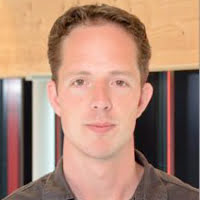
Inflammatory arthritis is often manifested in finger joints. Nowadays, rheumatologist routinely use ultrasound imaging due to its ability to visualize the extent of inflammation and damage in the joint. However, the growth of new or withdrawal of old blood vessels in the synovial membrane of the joint can be a much more sensitive and specific marker for differentiating between inflammatory diseases.
Multispectral photoacoustic imaging has great potential in this respect because it allows sensitive and highly-resolved functional imaging of blood vessels. Functional information, such as the location of the blood vessels and their oxygen saturation level, will allow a significant improvements to monitoring disease course and drug efficacy. We systematically investigated photoacoustic and ultrasound imaging of finger vasculature in healthy volunteers using a newly developed multimodal tomography system with a curved linear array. We present structural anatomical ultrasound images that are overlaid by coregistered multispectral photoacoustic images that show unprecedented detail of the skin and joint vasculature over the length of the finger. Vessels (100 μm to 1.5 mm) are visible along with details of the skin (epidermis and subpapillary plexus). Results from functional studies involving the photoacoustic responses of the phalangeal vasculature to externally applied triggers – such as application of a pressure cuff in the upper arm and temperature changes in the bath – are also presented. This work is important to lay the foundation for detailed research into photoacoustic imaging of the phalangeal vasculature in patients suffering from rheumatoid arthritis.
Peter van Es is a doctoral candidate in the Biomedical Photonic Imaging group at the University of Twente in the Netherlands. He has bachelor's and master's degrees in biomedical engineering focused on imaging and diagnostics. In his current work he focuses on photoacoustic and ultrasound imaging of inflammation in synovial joints.
4 :12 p.m.
Quantitative analysis of multimode fiber endoscopes
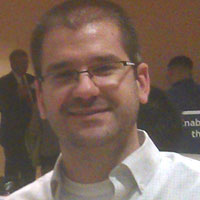
Optical researchers are continuously trying to shrink overall endoscope diameter to enable minimally invasive access to remote organs. In recent years, new ideas of
wavefront shaping have shown the feasibility of converting a multimode fiber (MMF) into an endoscope. Techniques originally designed for focusing through scattering materials have been adopted and modified for this purpose. The speckle field created at the distal tip of a MMF has similarities with the speckle field created by a scattering material. In the case of scattering materials, a fully developed speckle follows a Gaussian distribution with a speckle-contrast value close to 1. However, the speckle contrast created at the output of an MMF is usually much lower and varies depending of the MMF used. Commonly, step-index MMFs with a variety of core diameters have been used in experiments using wavefront shaping. To our knowledge, no studies have been made comparing the performance of different types of MMFs as endoscopes. We will present a quantitative comparison between two step-index MMFs and two graded-index MMFs, analyzing the enhancement achieved at a focus created at the distal tip employing wavefront-shaping techniques. Proper fiber selection leads to significant improvements in the performance of the endoscope.
Antonio M. Caravaca Aguirre is a doctoral candidate in the department of electrical, computer and energy engineering at the University of Colorado Boulder under the direction of professor Rafael Piestun. He received a master's degree in fundamental physics in 2010 from Complutense University of Madrid.
4:30 p.m.
FEATURED PRESENTATION
Wavefront engineering for in vivo deep-tissue imaging
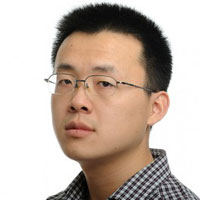
Multiphoton microscopy is widely adopted in biological study for its advantages in deep-tissue imaging at sub-cellular resolutions. However, the aberration and scattering in tissue distort laser focus, which reduces achievable resolution and limits maximum imaging depth. To improve the imaging performance in thick tissue, we have developed a method named the
iterative multiphoton adaptive compensation technique (IMPACT). Different from conventional adaptive optics methods, IMPACT can handle complicated wavefront correction at high speed. Here we show applications of IMPACT for in vivo neuroimaging, such as deep imaging of dendrites and spines at great depth after craniotomy and calcium imaging of neurons through intact mouse skulls. Volumetric imaging at high temporal and spatial resolution is highly desired for studying the functional dynamics of neuron network, cellular morphology changes and intercellular interactions in immunity systems. Controlling the optical focus in 3-D can also benefit from the latest wavefront-control technologies. By combining an ultrasound lens and a conventional two-photon fluorescence microscope, we achieved a cross-sectional frame rate of 1000 Hz. This enables in vivo, multicolor volumetric imaging of fast biological processes. We demonstrate the system performance by imaging calcium dynamics in the cerebral cortex of awake, behaving mice and neutrophils trafficking along blood vessels, as examples. Moreover, we show the system can function as a multicolor, in vivo imaging flow cytometer.
Lingjie Kong received his doctorate in optical engineering from Tsinghua University in Beijing in 2012. For postdoctoral training, he joined X. Sunney Xie’s group at Harvard University in 2012, working on coherent Raman scattering microscopy. In March 2013 he joined Meng Cui’s group at Howard Hughes Medical Institute's Janelia Research Campus, working on in vivo deep-tissue imaging by wavefront engineering.